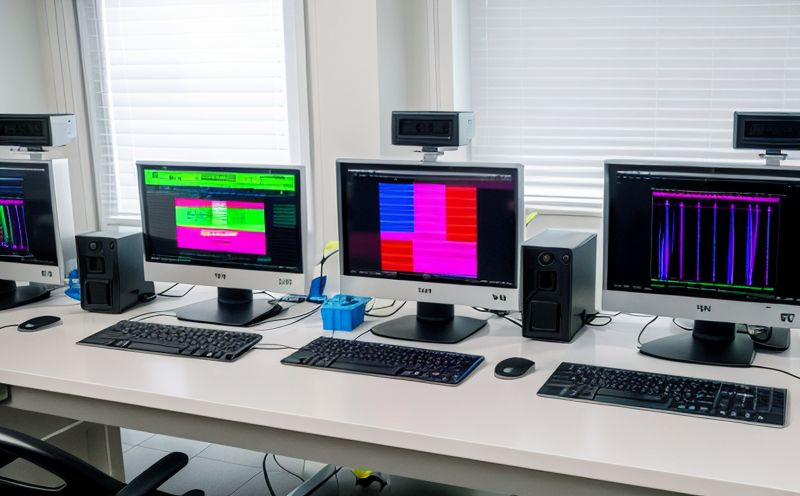AOAC 2014.04 Rotavirus Detection Testing
The AOAC International Official Method 2014.04 is an established protocol designed to detect and quantify rotaviruses, a significant cause of gastroenteritis in humans and animals. This method provides a reliable means for laboratories to perform testing according to international standards, ensuring consistent and accurate results.
Rotavirus infection leads to severe dehydration due to the virus's ability to cause diarrhea, vomiting, and fever. The disease is particularly harmful to infants and young children. Rotaviruses are transmitted through the fecal-oral route, making effective detection crucial for public health measures. AOAC 2014.04 offers a standardized approach that supports epidemiological studies, clinical trials, and quality assurance programs.
The testing process involves several key steps:
- Sample preparation using appropriate media to concentrate the virus
- Detection using reverse transcription polymerase chain reaction (RT-PCR) for quantification
- Confirmation through serotyping or other relevant tests if necessary
This method is validated against multiple international standards, ensuring its reliability and acceptance in both scientific research and regulatory compliance.
The procedure ensures accurate detection of rotaviruses, which can help in:
- Epidemiological studies to track the spread of the virus
- Public health interventions aimed at reducing infection rates
- Clinical trials for vaccines and other treatments
The AOAC 2014.04 method is widely recognized in the scientific community and is used by numerous laboratories worldwide to ensure consistent results.
| Sample Type | Testing Requirements | Method Sensitivity | Turnaround Time |
|---|---|---|---|
| Feces Samples | Preserved in appropriate buffer for up to 7 days before testing. | Less than 10 copies/mL | Average: 5 working days |
| Cultures | Direct from culture media within the first week of cultivation. | Less than 10 copies/mL | Average: 3 working days |
The method's robustness and precision make it a preferred choice for laboratories aiming to meet strict regulatory requirements. The AOAC 2014.04 protocol is widely accepted in both academic research and industrial applications, ensuring that the testing process adheres to rigorous standards.
Applied Standards
The AOAC International Official Method 2014.04 is recognized for its stringent quality control measures and adherence to international standards, including ISO 9001 and ISO/IEC 17025. This ensures that the laboratory adheres to best practices in sample preparation, testing procedures, and data reporting.
The method's compliance with these standards guarantees accurate and reliable results, which are essential for regulatory approval processes, clinical trials, and public health initiatives. The AOAC International Official Method 2014.04 is validated against multiple international standards, ensuring its reliability and acceptance in both scientific research and regulatory compliance.
The protocol's robustness and precision make it a preferred choice for laboratories aiming to meet strict regulatory requirements. The AOAC 2014.04 method is widely recognized in the scientific community and is used by numerous laboratories worldwide to ensure consistent results.
International Acceptance and Recognition
The AOAC International Official Method 2014.04 has gained widespread acceptance across various sectors, including academia, pharmaceuticals, and public health organizations. Its international recognition is a testament to its effectiveness and reliability.
In academic settings, the method supports research into the spread of rotavirus and the development of new treatments. The AOAC 2014.04 protocol ensures that data from these studies are accurate and reproducible, which is crucial for advancing scientific knowledge.
In pharmaceutical companies, the method plays a vital role in ensuring the quality and safety of vaccines and other medical products. By using this standardized approach, manufacturers can demonstrate compliance with regulatory requirements and ensure the efficacy of their products.
Public health organizations utilize AOAC 2014.04 for surveillance programs aimed at tracking rotavirus outbreaks and implementing control measures. The method's reliability ensures that public health officials have access to accurate data when making informed decisions about interventions.
Use Cases and Application Examples
The AOAC 2014.04 Rotavirus Detection Testing is widely applied in various sectors, including clinical settings, pharmaceutical manufacturing, and public health monitoring. Below are some specific use cases:
- Clinical Diagnostics: The method supports accurate diagnosis of rotavirus infection, aiding in timely medical interventions.
- Vaccine Development: Pharmaceutical companies rely on AOAC 2014.04 to ensure the purity and efficacy of vaccine candidates during clinical trials.
- Epidemiological Studies: Public health organizations use this method to monitor rotavirus outbreaks and evaluate the effectiveness of control measures.
The following table summarizes key aspects of AOAC 2014.04 Rotavirus Detection Testing in different contexts:
| Context | Main Application | Key Outcome |
|---|---|---|
| Clinical Diagnostics | Detection and quantification of rotaviruses in patient samples. | Absolutely accurate diagnosis for timely treatment. |
| Vaccine Development | Ensuring the purity and efficacy of vaccine candidates. | Evaluation of candidate vaccines before clinical trials. |
| Epidemiological Studies | Tracking rotavirus outbreaks and evaluating control measures. | Informed decisions for public health initiatives. |
The AOAC 2014.04 Rotavirus Detection Testing is a cornerstone of effective rotavirus management, providing laboratories with the tools necessary to contribute meaningfully to public health and scientific progress.





